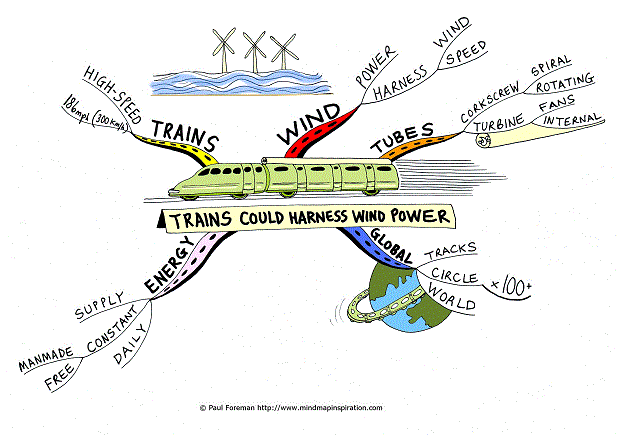The Psychology Of Misinformation: CNN's Perspective On Changing Minds

Table of Contents
Cognitive Biases and Misinformation
The spread of misinformation is often fueled by inherent cognitive biases that affect how we process information.
Confirmation Bias
Confirmation bias is our tendency to seek out and favor information confirming pre-existing beliefs, even if that information is inaccurate. This leads to the creation of echo chambers where individuals are only exposed to viewpoints reinforcing their own.
- Examples: Social media algorithms often prioritize content aligning with a user's past engagement, creating filter bubbles and reinforcing confirmation bias. Similarly, selective exposure to news sources that align with one's political leaning can significantly contribute to the spread of misinformation.
- CNN's Countermeasure: CNN combats this by actively presenting diverse perspectives on complex issues, offering a range of viewpoints beyond the dominant narrative. Their rigorous fact-checking process also helps to identify and correct misinformation.
Motivated Reasoning
Motivated reasoning describes how our emotional investment in certain beliefs influences our information processing. We tend to accept information that aligns with our desires or values, regardless of its accuracy.
- Real-world examples: The spread of misinformation surrounding climate change or vaccine safety often stems from motivated reasoning. Individuals deeply invested in specific viewpoints may reject scientific consensus in favor of information confirming their pre-existing beliefs. CNN has covered numerous instances of this, highlighting the emotional drivers behind the acceptance of false narratives.
- CNN's Strategy: CNN attempts to address motivated reasoning by appealing to shared values like public health and safety while emphasizing factual accuracy. Presenting information calmly and respectfully, without resorting to inflammatory language, is a crucial part of their strategy.
The Backfire Effect
The backfire effect is the frustrating phenomenon where correcting misinformation can, paradoxically, strengthen pre-existing beliefs.
- Psychological Mechanisms: This occurs because directly challenging someone's beliefs can trigger a defensive response, making them cling even more tightly to their inaccurate information. The perception of an attack on their identity or values can further amplify this effect.
- CNN's Approach: CNN strives to avoid the backfire effect by prioritizing respectful dialogue and providing context. They focus on presenting evidence in a way that encourages critical thinking, rather than directly accusing individuals of believing false information.
The Role of Social Media in Spreading Misinformation
Social media platforms, while offering valuable communication tools, play a significant role in the rapid dissemination of misinformation.
Algorithmic Amplification
Social media algorithms prioritize engagement, often rewarding sensational or emotionally charged content—even if it's false. This leads to the rapid amplification of misinformation.
- Examples: The rapid spread of fake news stories during elections or the proliferation of conspiracy theories on platforms like Facebook and Twitter are prime examples. Algorithms designed to maximize user engagement inadvertently contribute to the spread of harmful narratives.
- CNN's Response: CNN employs its journalistic expertise to identify and expose misinformation campaigns on social media. They actively use their platforms to debunk false narratives and provide accurate context to viral content.
Group Polarization and Echo Chambers
Social media facilitates the formation of echo chambers, where individuals primarily interact with like-minded people, reinforcing existing beliefs and leading to group polarization.
- Echo Chamber Dynamics: Within these echo chambers, extreme viewpoints become normalized, making it difficult to challenge inaccurate information or consider alternative perspectives. This can lead to further entrenchment of misinformation.
- CNN's Outreach: CNN actively seeks to reach audiences outside of established echo chambers through diverse media formats and engagement strategies. They aim to foster a more inclusive and informed public discourse.
The Spread of Conspiracy Theories
Social media provides fertile ground for the spread of conspiracy theories. The anonymity afforded by online platforms and the ease of sharing information allows false narratives to spread quickly.
- Examples: The spread of QAnon, anti-vaccine conspiracy theories, and other unfounded beliefs demonstrates the ease with which conspiracy theories can become viral sensations.
- CNN's Role: CNN plays a crucial role in debunking conspiracy theories, providing accurate information, and offering fact-based counter-narratives.
CNN's Strategies for Combating Misinformation
CNN employs multiple strategies to combat the spread of misinformation and promote accurate information.
Fact-Checking and Verification
CNN's rigorous fact-checking process is a cornerstone of its commitment to journalistic integrity.
- Successful Fact-Checks: CNN regularly publishes fact-checks addressing false claims and misinformation, providing evidence-based corrections.
- Challenges: The speed and volume of information online make fact-checking a constant and challenging undertaking.
Media Literacy Initiatives
CNN recognizes the importance of media literacy in combating misinformation and actively promotes critical thinking skills.
- Educational Programs: CNN participates in educational programs aiming to empower individuals to critically evaluate information sources and identify misinformation.
- Impact: Improved media literacy skills equip individuals to navigate the complex information landscape and become more discerning consumers of news.
Promoting Accurate and Reliable Information
CNN prioritizes providing accurate and reliable news coverage, adhering to the highest journalistic standards.
- Journalistic Ethics: Their commitment to ethical standards and rigorous fact-checking ensures the reliability of their reporting.
- Credible Sources: CNN emphasizes using credible sources and evidence-based reporting to provide accurate and trustworthy information to its audience.
Conclusion
Understanding the psychology of misinformation—factors like confirmation bias, motivated reasoning, and the backfire effect—is crucial to effectively counter its spread. Social media's role in amplifying false narratives further highlights the need for robust strategies. CNN's multi-pronged approach, combining fact-checking, media literacy initiatives, and a commitment to accurate reporting, represents a significant effort to combat the pervasive problem of misinformation. By understanding the psychology of misinformation and relying on credible sources like CNN, we can all contribute to a more informed and accurate public discourse. Let's actively engage with reliable news sources and cultivate critical thinking skills to fight the spread of misinformation.

Featured Posts
-
 Wind Power For Trains Reducing Pollution And Saving Energy
May 03, 2025
Wind Power For Trains Reducing Pollution And Saving Energy
May 03, 2025 -
 Is A Boris Johnson Comeback On The Cards For The Conservatives
May 03, 2025
Is A Boris Johnson Comeback On The Cards For The Conservatives
May 03, 2025 -
 Malta Coast Drone Attack On Aid Ship En Route To Gaza
May 03, 2025
Malta Coast Drone Attack On Aid Ship En Route To Gaza
May 03, 2025 -
 I Poleodomiki Diafthora Kai I Oikodomisi Enos Isxyroy Kratoys
May 03, 2025
I Poleodomiki Diafthora Kai I Oikodomisi Enos Isxyroy Kratoys
May 03, 2025 -
 Supreme Court Hearing Norfolk Mp Battles Nhs Over Gender Policy
May 03, 2025
Supreme Court Hearing Norfolk Mp Battles Nhs Over Gender Policy
May 03, 2025
